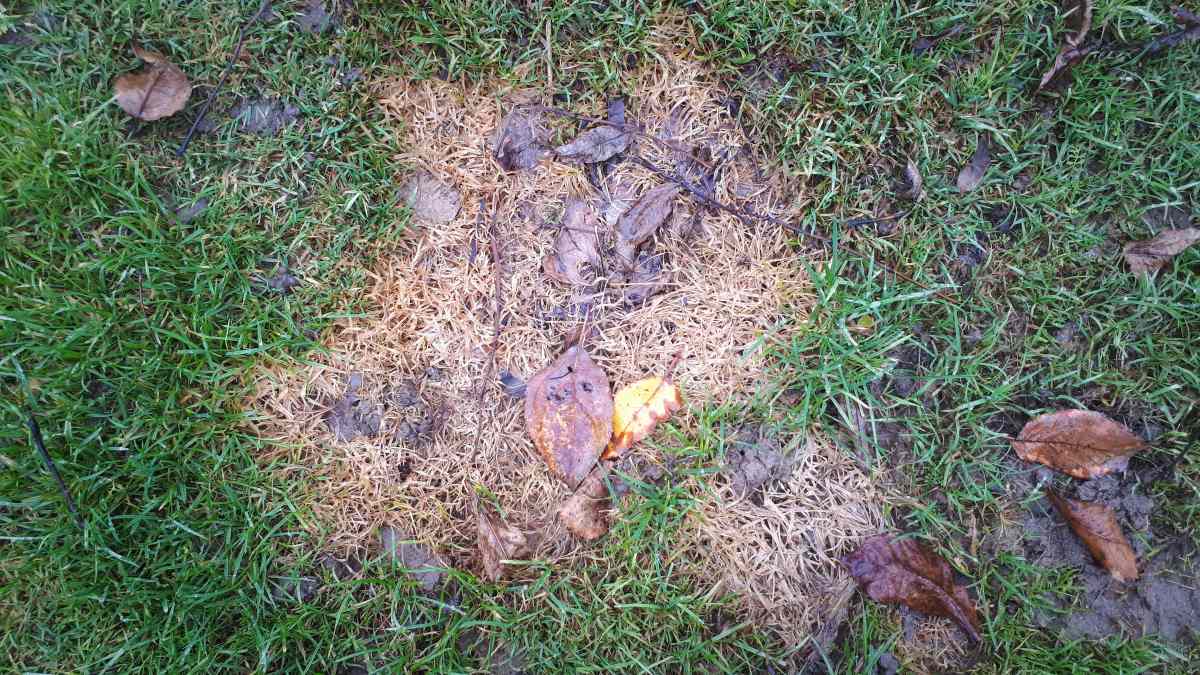
Did you just plant grass seed and don’t know when to mow after overseeding? The answer: Wait between 2 and 4 weeks until your grass is 3 to 4 inches tall before mowing your lawn.
The timing of your first mow depends on several factors, including the type of grass, its height, and the weather conditions. Understanding the right time allows your new seed to sprout and develop strong roots. Remember, haste can sabotage your efforts. Patience is key to allowing your lawn to thrive.
Factors to Consider When to Mow After Overseeding

You’ll need to exercise some patience and wait between 2 to 4 weeks to mow after overseeding. However, factors like grass type, weather, soil conditions, and the overseeding process itself play a role and the waiting period could extend up to 6 weeks.
Grass Height
Mow when the new grass reaches a height of at least 3 inches, though waiting until it hits 4 inches is even better. This ensures the new grass has established strong roots capable of withstanding the stress of mowing.
When you mow your lawn, follow the one-third rule: Never cut off more than one-third of the grass height at a time to keep it healthy and prevent stress.
Grass Type
The type of grass you’ve overseeded can influence the germination and growth timeline. Take a look at the following chart:
| Grass type | Germination time |
| Kentucky bluegrass | 14 to 30 days |
| Ryegrass | 5 to 10 days |
| Fine fescue | 7 to 14 days |
| Tall fescue | 10 to 14 days |
| St. Augustine | 10 to 30 days |
| Bermudagrass | 10 to 30 days |
| Centipedegrass | 14 to 21 days |
| Zoysiagrass | 14 to 21 days |
You can generally mow cool-season grasses like Kentucky bluegrass and tall fescue after 2 to 4 weeks but wait until 5 to 6 weeks for warm-season grasses, such as St. Augustine and Zoysiagrass.
Weather
Weather is vital when determining when to mow after overseeding.
- Wet weather: Mild, rainy weather promotes faster germination and helps seedlings grow quicker.
- Dry weather: Hot and dry weather can slow down germination and grass development. In these conditions, it’s best to set an appropriate irrigation schedule to help your seed establish strong roots before considering your first mow.
FAQs About When to Mow After Overseeding
How much does lawn mowing cost?
The cost of professional lawn mowing in 2024 typically falls between $36 and $105. This price range is influenced by factors such as the size of your yard and the complexity of the terrain that needs to be mowed.
How do you know your grass has taken root?
You can perform a simple root check to ensure that the turf has been rooted. Grab a handful of grass and gently pull upward. If the grass easily lifts away from the soil, it’s not yet rooted enough. Wait a few more days and test again. Once you can tug without the turf lifting, you know your grass has taken root.
What can happen if you mow too early after overseeding?
Cutting the grass too soon after overseeding can damage the foliage and the roots. This weakens the young grass making your lawn more susceptible to diseases and pests. As a result, all the efforts in overseeding are in vain if the grass has not taken root before mowing.
When to Hire a Professional
Knowing when to mow after overseeding is important because you want the seeds to sprout, develop, and be strong. Mowing too soon would waste all your effort. However, if you find yourself short on time, unsure of the process, or lacking the necessary equipment, you can ask for help.
Consider calling a lawn care professional who can mow your lawn and assist you with the care of your turf. By entrusting your turf to a skilled professional, you can relax knowing that your lawn is in capable hands.
Sources:
Main Photo Credit: aboutmomentsimages / Adobe Stock Free / License




